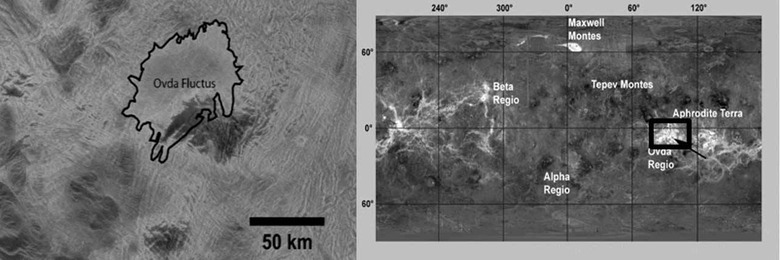A New Study Of Venus Lava Flow Suggests It Wasn't Once Wet
Scientists have been studying a structure on the surface of Venus called the Ovda Fluctus lava flow. The study shows that the lava flow is made of basaltic lava and weakens any notion that Venus might have once had an Earth-like climate with oceans of liquid water. Past studies have suggested that Venus might have once been warm and wet based on the chemistry of its atmosphere and the presence of highlands.The highlands were thought to be made of granitic rock like the continents on Earth. On Earth, the continents required oceans of water to form. However, scientists for the Lunar and Planetary Institute (LPI) have found that the lava flow on the Venusian Ovda Regio highlands plateau is composed of basaltic lava.
The team says that the discovery calls into question the notion that the planet might have once been Earth-like with oceans of liquid water. The team re-mapped the Ovda Fluctus lava flow using radar data and found that the flow is not granitic, as was expected for the location. It's more likely made of basalt rock, which can form with or without water.

The team says that if the Ovda Regio region is made of basaltic rock as is most of Venus, they were likely squeezed up to the current height by internal forces inside the planet. Those forces would likely be similar to plate tectonics on Earth. The new data has potentially significant implications for the evolutionary history of Venus.
The work on the lava flow began in 2018 as part of the LPI Summer Intern Program. That program brought competitively selected interns to Houston to work on the research with LPI scientists and scientists from ARES Division of NASA's Johnson Space Center.
